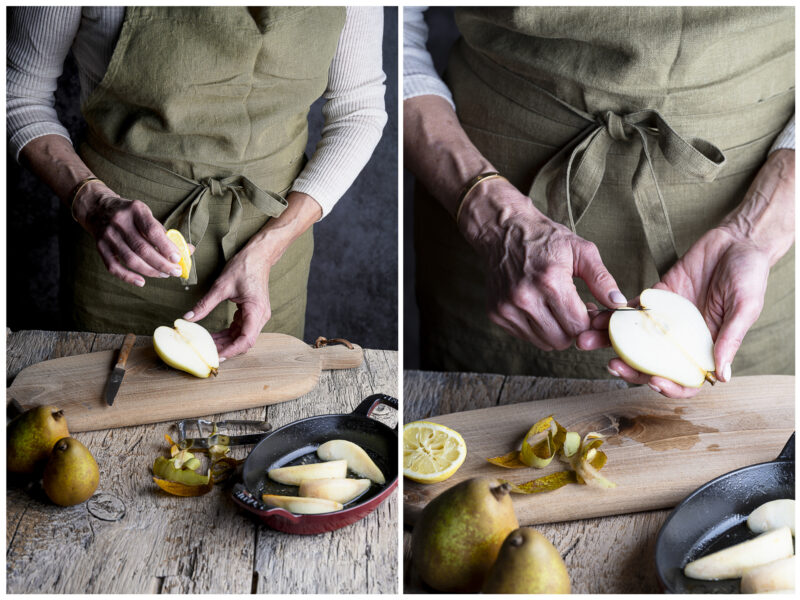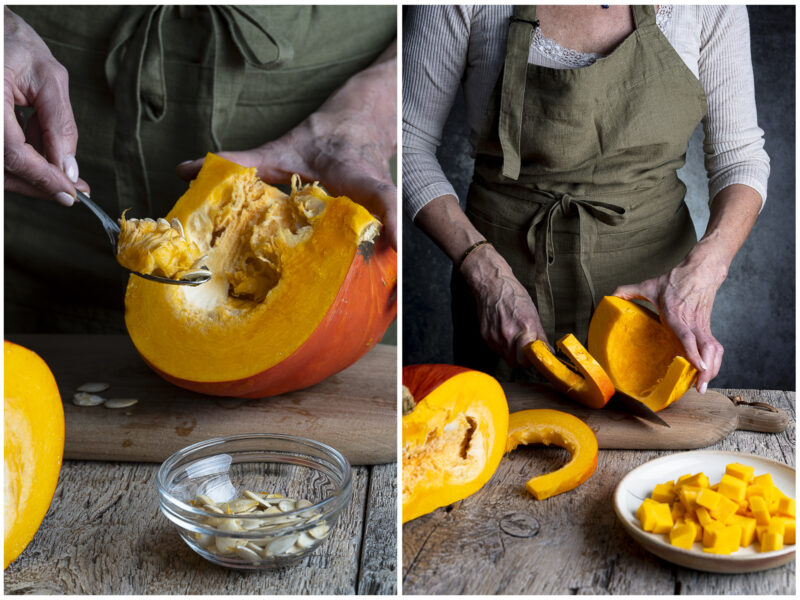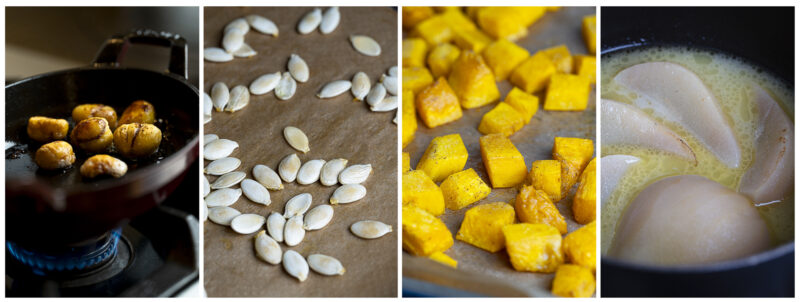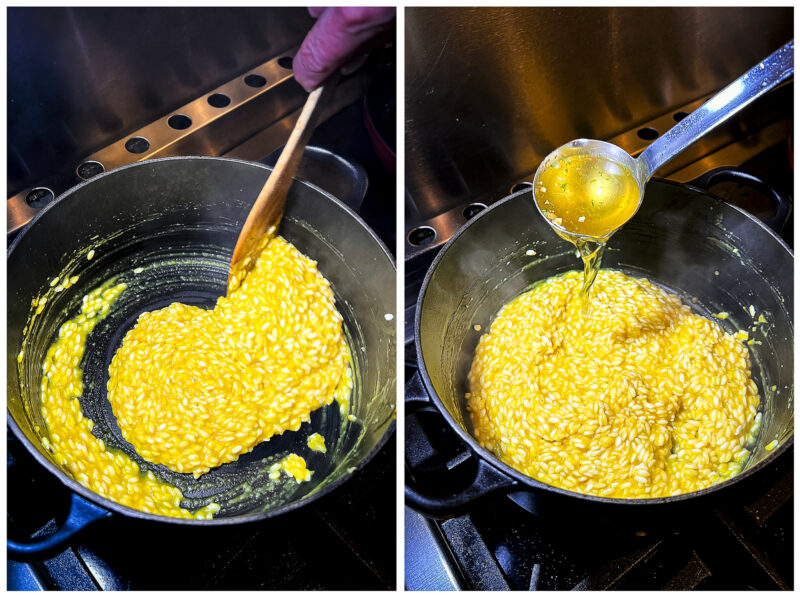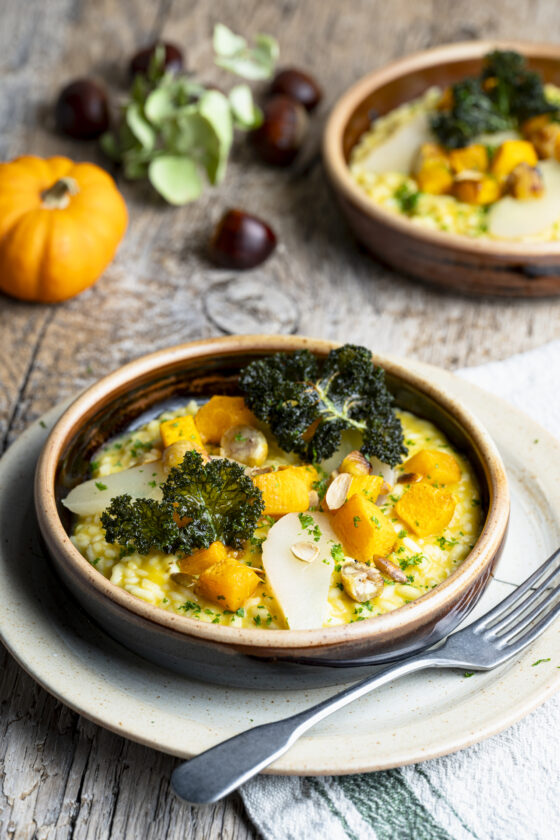Pumpkin risotto with taleggio, pear and chestnuts
Pumpkin is the world’s best known and most widely grown fruit. It comes in all shapes, sizes and colors. Not only is pumpkin very tasty and healthy, you can also make all kinds of objects from it. Here’s what's on the menu today. Pumpkin risotto, but first let me tell you everything there is to know about this versatile fruit.
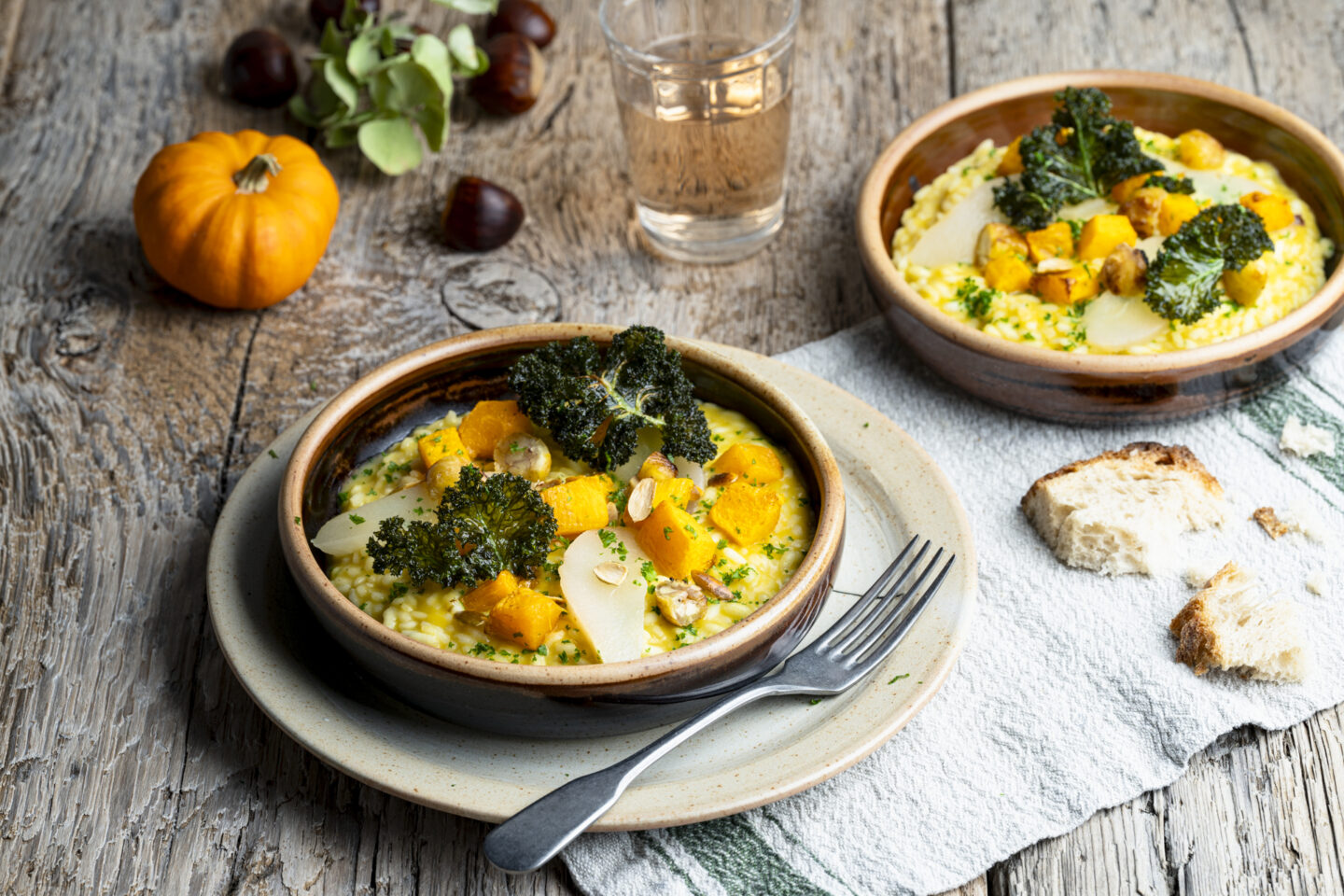
Where does the pumpkin come from?
Together with cucumber and squash, pumpkin belongs to the family of Cucurbitaceae or the cucumber family, which is spread all over the world. The early fruits originated mainly from the tropical regions of Central and South America, but also from Africa and Southeast Asia.
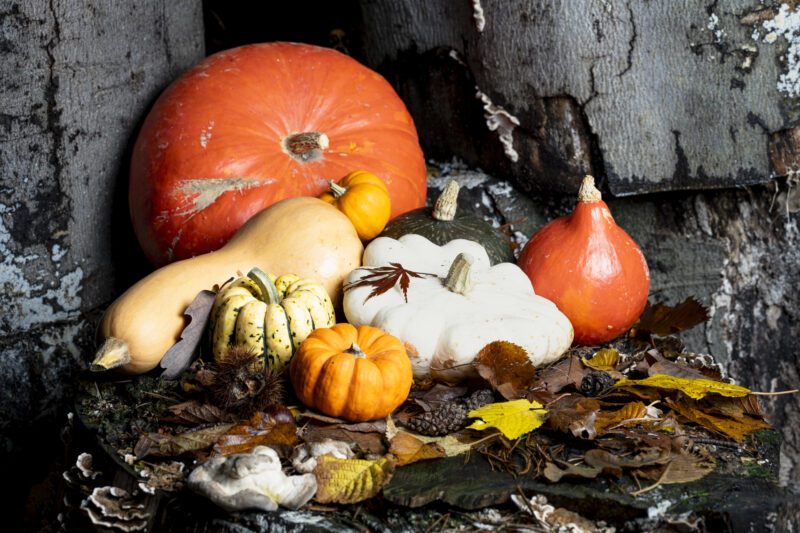
Pumpkin: versatile and useful
Pumpkins and squash have been in use for over 10 000 years, first as liquid containers but later as bowls for food and utensils. In China, the small squash served as snuff boxes. In Argentina they are still used as cups for drinking maté, the typical South American caffeine-rich herbal drink.
Pumpkins often have a beautiful color and shape, making them ideal as decoration and ornament. Think of the Jack-o'-Lanterns that decorate homes during Halloween or the finely crafted and painted gourds in Peru and Mexico. In North America and New Zealand, indigenous people made masks out of pumpkins, and in Africa they were transformed into pipes.
Pumpkins also serve as musical instruments. There are the maracas from South America, the sansa-rimba from Africa and tam-tams and drums among different nations and cultures. Even toddlers in earlier times had a lot of fun with their rattle made of pumpkin.
But do you know what I think find the coolest thing made out of pumpkin? A bird nesting box.
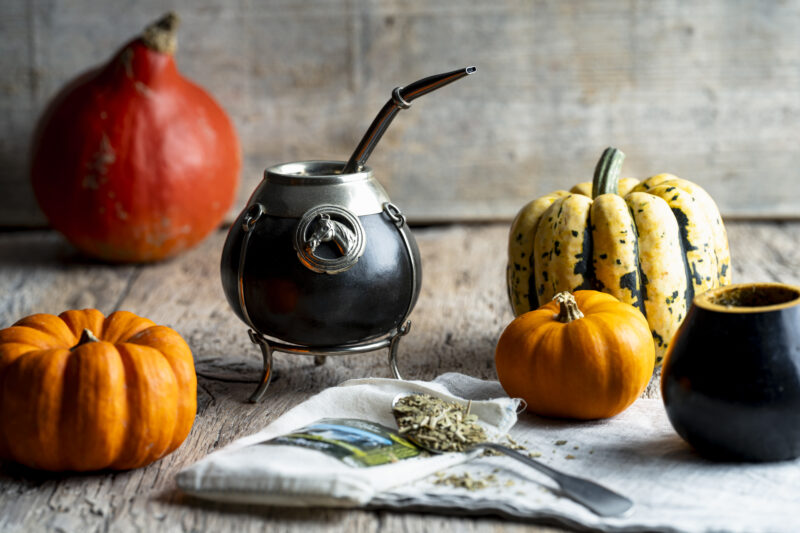
Pumpkin is healthy
Pumpkin has nourishing, diuretic, laxative and calming properties, and therefore has a very good effect on the functioning of our body. Furthermore, pumpkin bursts with vitamins and fiber. Vitamin A and beta-carotene are present in abundance, but several other vitamins also are present. Pumpkins also contain a variety of minerals and trace elements, including calcium, iron and magnesium. Plenty of reasons to start cooking with pumpkin.
Cooking with pumpkin
As I already mentioned, pumpkin is a fruit and not a vegetable. Therefore, you can prepare either sweet or savory dishes with pumpkin, just like with avocado.
Pumpkin soup is a favorite of young and old, but pumpkin puree, chutney, au gratin and pumpkin pie are also very tasty. Try making chips from fine slices of pumpkin or incorporate pieces of pumpkin into your next stir-fry. I roast pieces of pumpkin in the oven with olive oil and spices. Cumin, nutmeg, cinnamon, ginger, chili pepper or rosemary are all good choices to lift the flavor of your dish to the next level.
Never discard the seeds of the pumpkin. First remove the stringy fibers and dry the seeds. Heat the oven to 170 °C, mix the seeds with a dash of olive or coconut oil and spread them open on a baking sheet. Roast for about 20 minutes until golden but not brown. The shells will pop open, and the seeds are easily removed.
Can you eat pumpkin skin?
You can actually eat the skin of most pumpkin varieties, but some are better suited than others. Usually, pumpkin skin is thick and hard and takes a long time to cook. The best choice is the thin skin of sweet butternut or Hokkaïdo squash. Roast the peel separately or leave it attached to the flesh.
Recipe: pumpkin risotto with taleggio, pear and chestnut.
For this recipe, I use the small orange Hokkaïdo pumpkin, called potimarron in French. Its dark yellow flesh is sweet and tastes a bit like chestnut. The Hokkaïdo squash is great for all kinds of preparations and can even be eaten raw. Grate the flesh and mix it with a mustard vinaigrette for a surprising dish.
Don’t let the long list of ingredients put you off. You don’t have to be a seasoned chef to prepare this wonderful meal. Just work step by step.
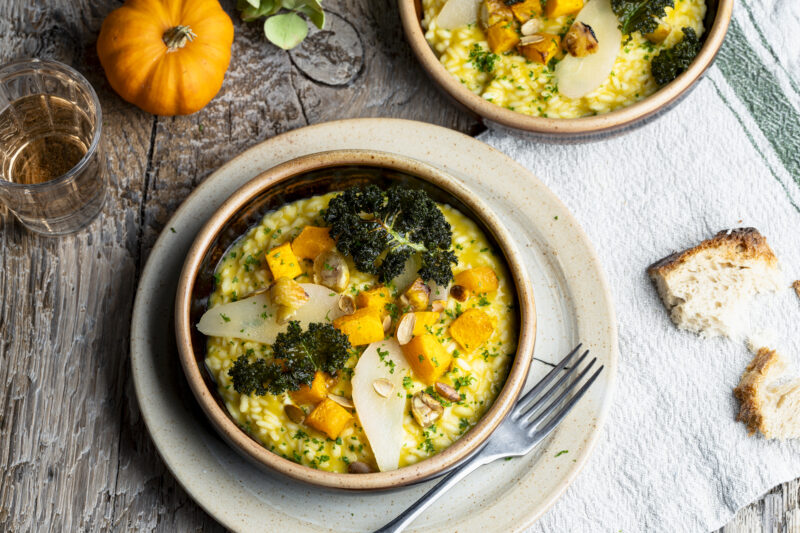
Ingredients for 4 people:
For the pears:
- 2 pears
- Juice of ½ lemon
- 1 tablespoon butter
- 1 tablespoon sugar
- 125 ml water
For the pumpkin:
- 100 g diced pumpkin
- 2 teaspoons olive oil
- ½ teaspoon ground cumin seeds
- 1 pinch of sea salt
- ½ teaspoon ground pepper
For the chestnuts:
- 12 precooked chestnuts
- 1 tablespoon butter
For the risotto:
- 75 g butter
- 1 chopped onion
- 300 g pumpkin cut into small cubes
- 400 g vialone or arborio rice
- 1.5 L vegetable stock
- 100 g taleggio, rind removed and diced
- Ground pepper and sea salt
For the finishing touch:
- Roasted pumpkin seeds
- A few leaves of crispy-fried kale (optional)
- 1 tablespoon finely ground parsley
-
Step 1: stew the pears
Peel the pears, cut them in half and remove the core. Sprinkle with lemon juice so they do not turn brown. Melt the butter in a pan and bake the pears for 2 minutes, flat side down. Sprinkle the sugar over the pears, deglaze the pan with water and put on a lid. Let the pears cook over low heat. Set them aside.
![Pumpkin Risotto 4]()
-
Step 2: roast the pumpkin for topping
In this step, you will prepare the pumpkin to finish the dish. Preheat the oven to 180 °C and line a baking sheet with baking paper. In a bowl, mix the oil with the spices. Add in the pumpkin pieces and mix well. Spread the pumpkin pieces on the baking sheet and roast for about 20 minutes.
![Pumpkin Risotto 3]()
-
Step 3: prepare the chestnuts
Heat the butter in a pan and fry the chestnuts until slightly crispy.
Keep the pears, pumpkin pieces and chestnuts warm in the oven at 100 °C. Now start the risotto.
![Pumpkin Risotto 1]()
-
Step 4: prepare the risotto
Bring the stock to a boil. Heat half the butter in a wide pan and sauté the onion. Add the squash and continue cooking over low heat until tender. If necessary, add a splash of water so your pumpkin doesn't burn. Puree, and season with salt.
Now add the rice to the pumpkin puree and simmer for 1 minute, stirring constantly. Pour in a ladleful of broth and continue cooking. As soon as the rice becomes drier, add broth and continue cooking until the rice is al dente.
Remove the pan from the heat, stir in the remaining butter and taleggio and season with salt and pepper. The risotto should be moist and runny, but not watery! If needed, add a few tablespoons of broth at the end.
![Pumpkin Risotto 2]()
-
Step 5: Plate the dish
Cut the pears into strips and halve the chestnuts. Divide the risotto among the plates. Arrange the pears, roasted pumpkin and chestnuts over the rice. Sprinkle the pumpkin seeds over the dish and finish with crispy kale, some parsley and a drizzle of olive oil.
![Pumpkin Risotto 1370]()
